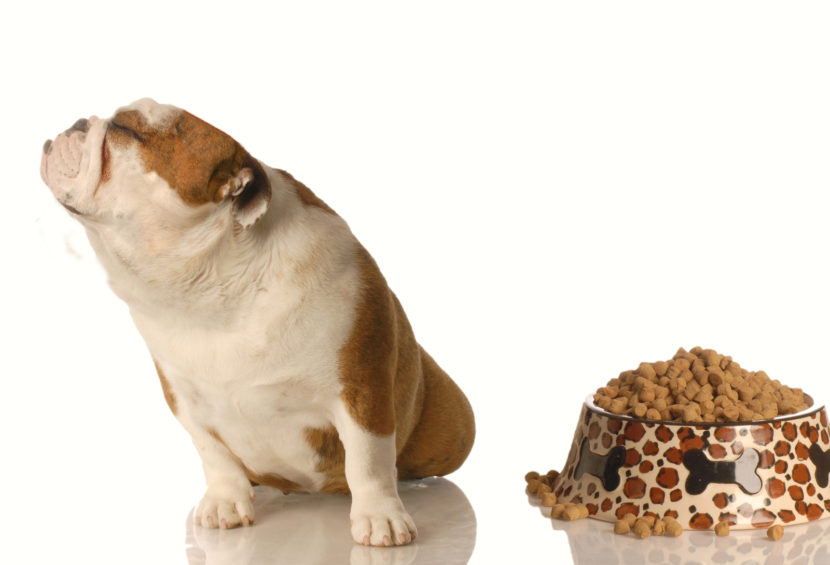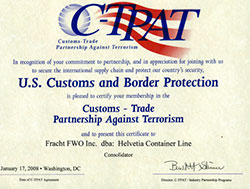Pet Food Safety a Priority
By Carol Anderson
The issue of pet food safety was thrust into the public spotlight in 2007, when the largest pet food recall in history was given substantial media attention. On March 16th of that year, more than 60 million containers of pet food and treats were recalled. The products contained wheat gluten and rice protein that were deliberately contaminated. Menu Foods, a leading Canadian manufacturer of dry dog and cat food, initiated the recall.
This recall, along with other recalls of spinach and peanut butter, shone a spotlight on the issue of food safety in an increasingly globalized food chain. As the U.S. Food and Drug Administration’s (FDA’s) Deputy Commissioner for Foods Michael R. Taylor noted in 2012, “The pet food industry has customers with high expectations.…The contamination of pet food in 2007 is a good example; we received more than 14,000 reports in the first four weeks after the contamination was discovered.” Since then, there have been hundreds of recalls of unsafe pet food around the world. And it’s an issue that will garner even more attention as more and more of us include pets in our households.
Pet Food Safety Issue Grows Along with Pet Ownership
Today, pet ownership is on the rise around the world. The European Pet Food Industry Federation (FEDIAF) notes that 72 million households in Europe include at least one pet. In the U.S., the number-one pet-owning country, the American Pet Products Association estimates that, in 2012, there were 96 million pet cats and 83 million pet dogs. And in China, pet ownership is growing too: there are now 30 million pets in mainland China’s households.
Feeding our four-footed companions has become a growing market as well: the global pet food market is expected to reach a value of USD$74.8 billion by 2017.
Manufacturers Becoming More Aware of Pet Food Safety Risks
For pet food manufacturers, the safety of their products as a central focus, notes Pat Tovey, Director of Technology and Regulatory Compliance at the Pet Food Institute in Washington, DC (the Pet Food Institute’s 30 member companies account for more than 98% of the pet food manufactured in the U.S.). “No one wins in the case of recalls or problems with safety,” he says. “Product safety is our members’ number-one priority. The industry’s long track record of safe products makes this very clear—we are committed to keeping pets healthy and safe.”
The Institute’s members use thorough food safety plans, comprising CGMP (current good manufacturing practice) elements and comprehensive preventive controls, to manufacture safe products through a detailed analysis of the risks, and to outline detailed steps that mitigate those risks. The Institute also runs a number of food safety workshops for its members, and has devoted a great deal of time to analyzing the new FSMA regulations and engaging with the Food and Drug Administration (FDA) through the agency’s public consultation process.
In the European Union, FEDIAF’s Guide to Good Practice places HACCP (hazard analysis and critical control point) at the center of a comprehensive pet food safety system viagra genérico precio. It stipulates that “the basis of the pet food manufacturer’s pet food safety system shall be a HACCP Plan which shall be systematic, comprehensive, thorough, fully implemented and maintained.”
New Government Rules for Pet Food Safety
In the U.S., the new Food Safety Modernization Act’s proposed rule for preventive controls on animal food will establish Good Manufacturing Practices (GMPs) for pet food and animal feed —good hygiene practices, pet control, proper cleaning and maintenance of plants and grounds to ensure better pet food safety.
In Canada, imported pet food (the bulk of its supply) must follow the Consumer Packaging and Labelling Act, and the Health of Animals Regulations regulates all imported food and treats.
Keeping Pets Safe Keeps us Safe Too
Pet food safety is an important concern for pet lovers, manufacturers and governments everywhere. Going forward, evolving legislative oversight as well as industry-led initiatives will help ensure the safety of pets around the world.
About the Author
Carol J. Anderson is Global Food Safety Resource’s Managing Editor.
To have more articles like this emailed to your inbox, become a GFSR Member today!

-
 FeaturedRisk management
The Cost of a Breach: What a Cyberattack Could Mean for Food Safety Recalls
FeaturedRisk management
The Cost of a Breach: What a Cyberattack Could Mean for Food Safety Recalls
-
 FeaturedRisk management
Securing the Food Chain: How ISO/IEC 27001 Strengthens Cybersecurity
FeaturedRisk management
Securing the Food Chain: How ISO/IEC 27001 Strengthens Cybersecurity
-
 FeaturedRisk management
Revolutionizing Food Safety Training: Breaking Out of the “Check-the-Box” Mentality
FeaturedRisk management
Revolutionizing Food Safety Training: Breaking Out of the “Check-the-Box” Mentality
-
 GFSI Standards
GFSI 2025: Building Trust, Tech-Forward Solutions, and Global Unity in Food Safety
GFSI Standards
GFSI 2025: Building Trust, Tech-Forward Solutions, and Global Unity in Food Safety
-
 FeaturedFood Safety
Integrated Pest Management: Strategies to Protect Your Brand’s Reputation
FeaturedFood Safety
Integrated Pest Management: Strategies to Protect Your Brand’s Reputation
-
 FeaturedFood Safety Culture & Training
No Open Door Policy: Challenges That Impact Pest Control in Food Processing Plants
FeaturedFood Safety Culture & Training
No Open Door Policy: Challenges That Impact Pest Control in Food Processing Plants



